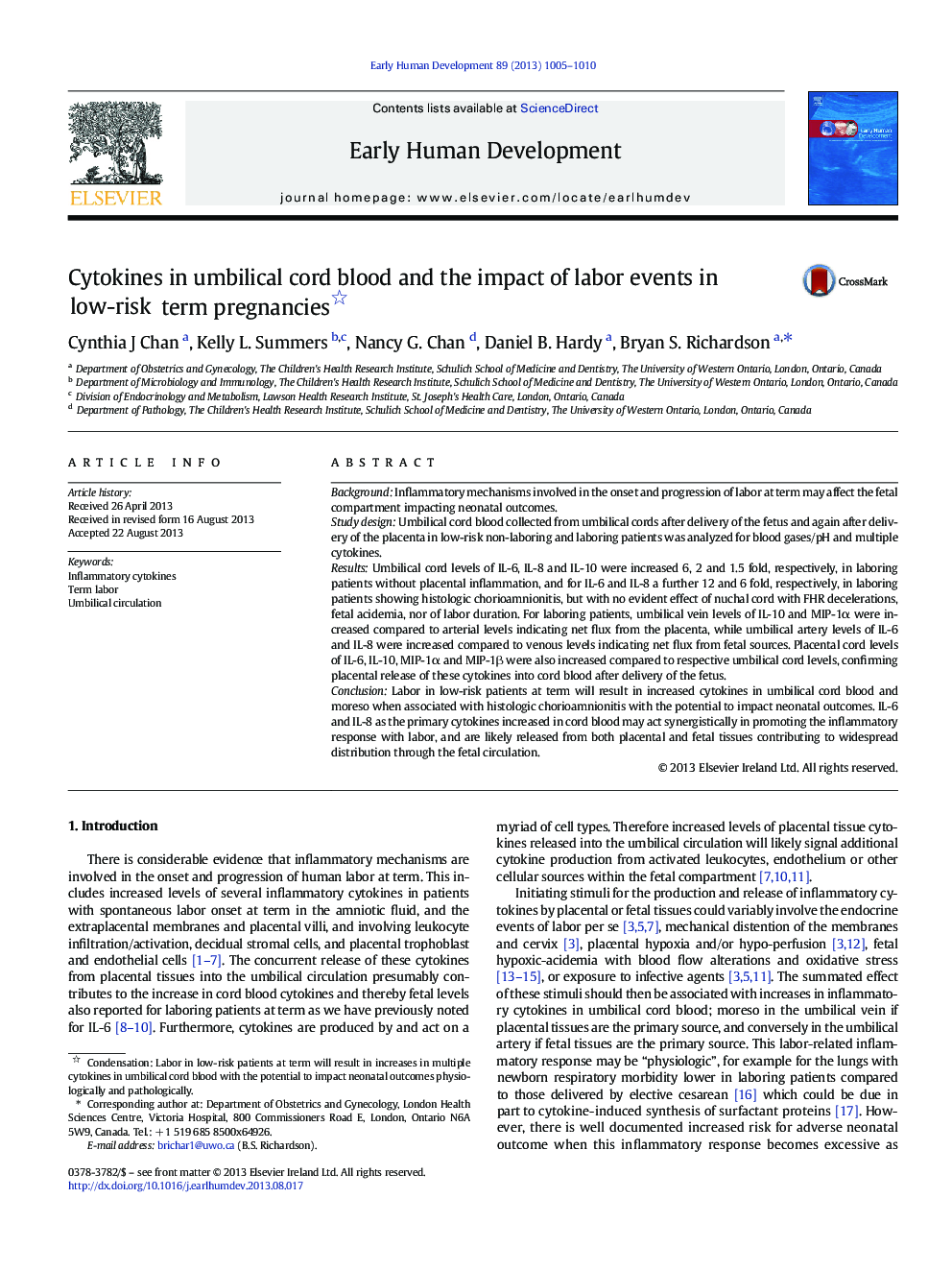| Article ID | Journal | Published Year | Pages | File Type |
|---|---|---|---|---|
| 6171933 | Early Human Development | 2013 | 6 Pages |
BackgroundInflammatory mechanisms involved in the onset and progression of labor at term may affect the fetal compartment impacting neonatal outcomes.Study designUmbilical cord blood collected from umbilical cords after delivery of the fetus and again after delivery of the placenta in low-risk non-laboring and laboring patients was analyzed for blood gases/pH and multiple cytokines.ResultsUmbilical cord levels of IL-6, IL-8 and IL-10 were increased 6, 2 and 1.5 fold, respectively, in laboring patients without placental inflammation, and for IL-6 and IL-8 a further 12 and 6 fold, respectively, in laboring patients showing histologic chorioamnionitis, but with no evident effect of nuchal cord with FHR decelerations, fetal acidemia, nor of labor duration. For laboring patients, umbilical vein levels of IL-10 and MIP-1α were increased compared to arterial levels indicating net flux from the placenta, while umbilical artery levels of IL-6 and IL-8 were increased compared to venous levels indicating net flux from fetal sources. Placental cord levels of IL-6, IL-10, MIP-1α and MIP-1β were also increased compared to respective umbilical cord levels, confirming placental release of these cytokines into cord blood after delivery of the fetus.ConclusionLabor in low-risk patients at term will result in increased cytokines in umbilical cord blood and moreso when associated with histologic chorioamnionitis with the potential to impact neonatal outcomes. IL-6 and IL-8 as the primary cytokines increased in cord blood may act synergistically in promoting the inflammatory response with labor, and are likely released from both placental and fetal tissues contributing to widespread distribution through the fetal circulation.
